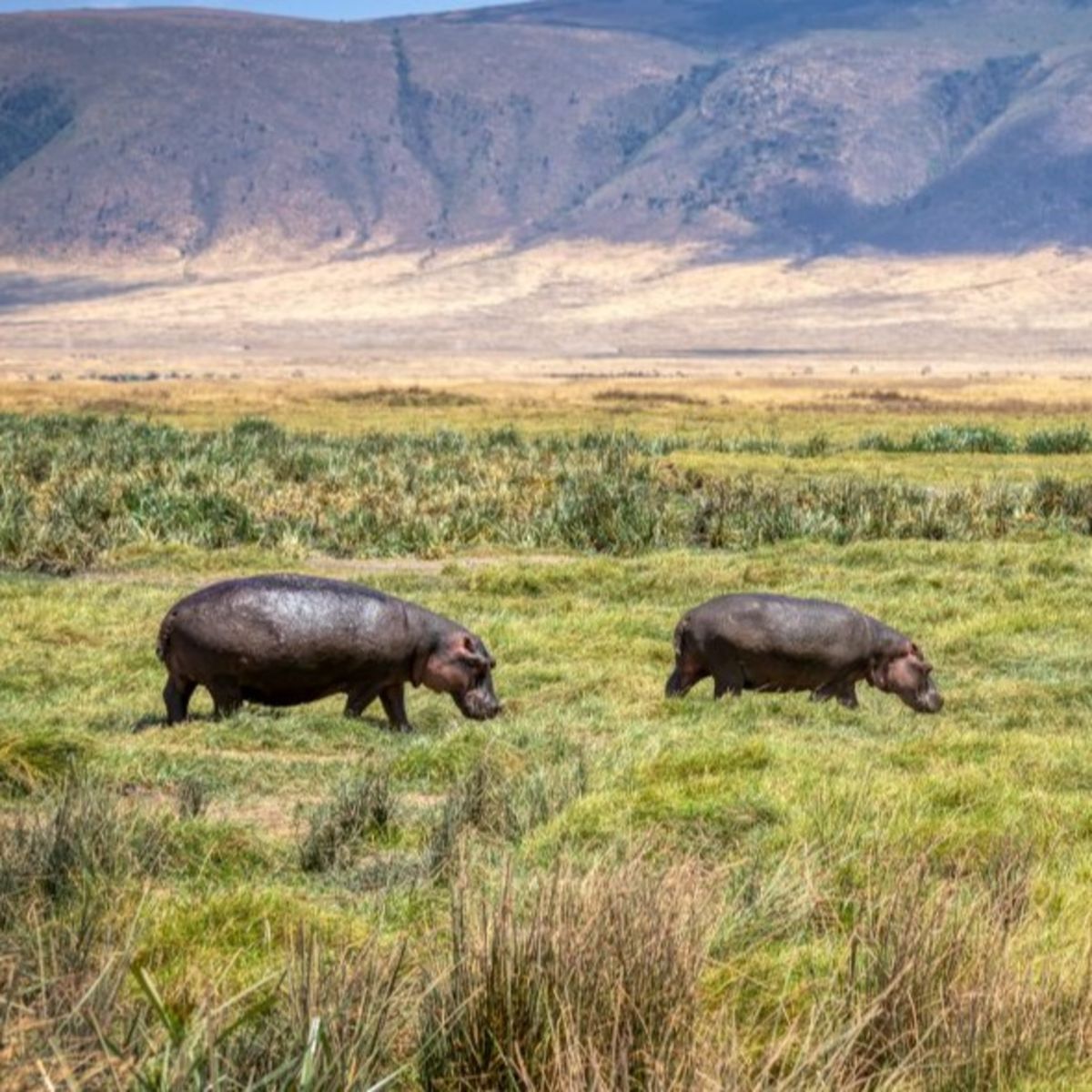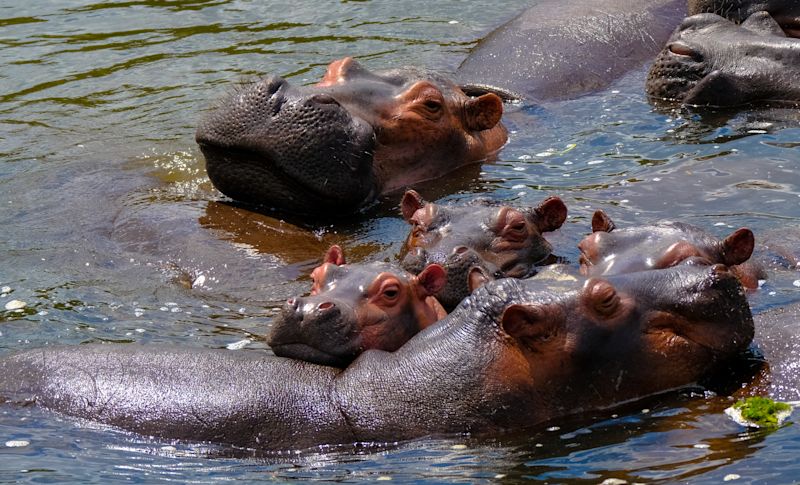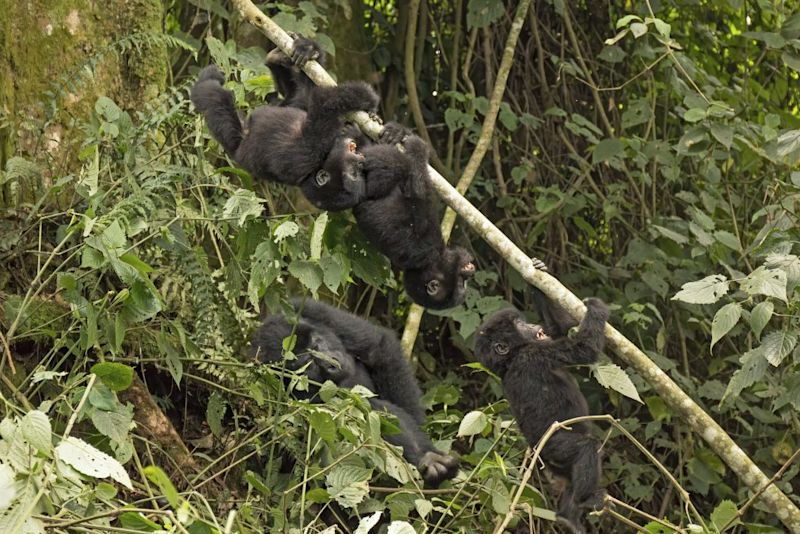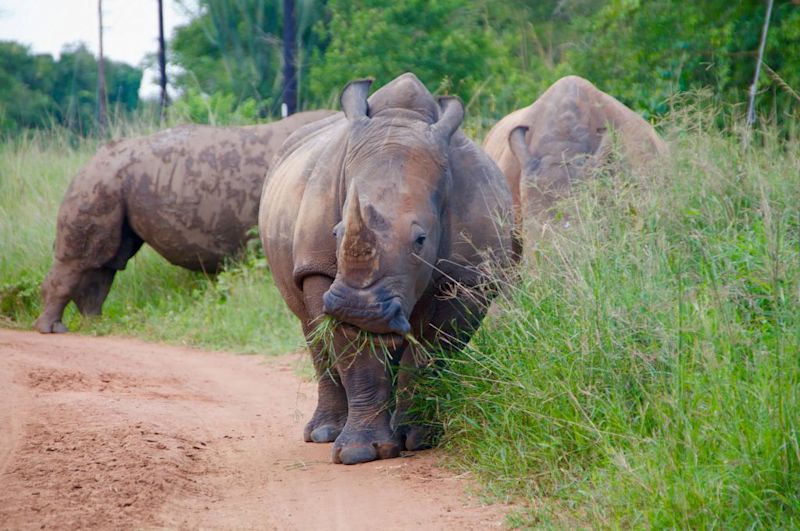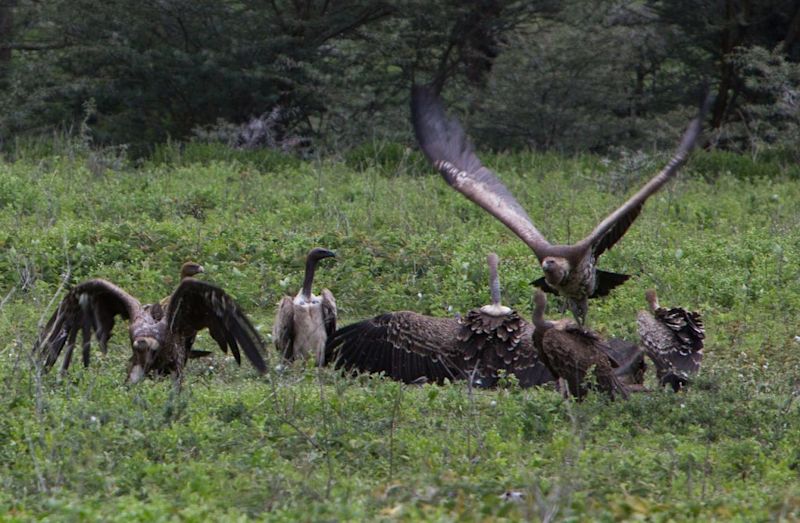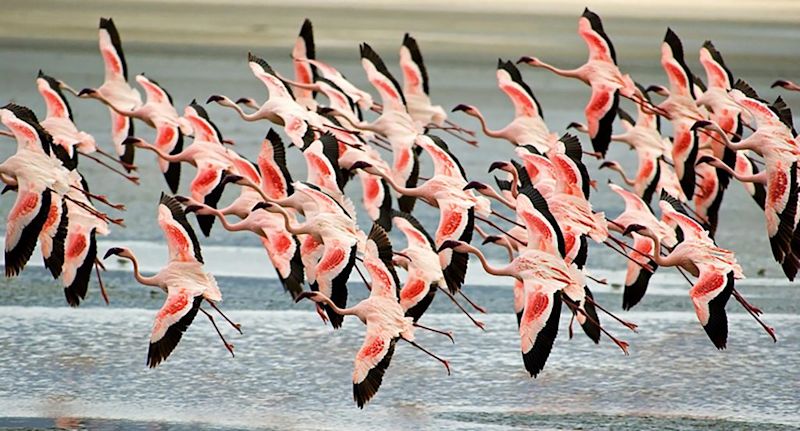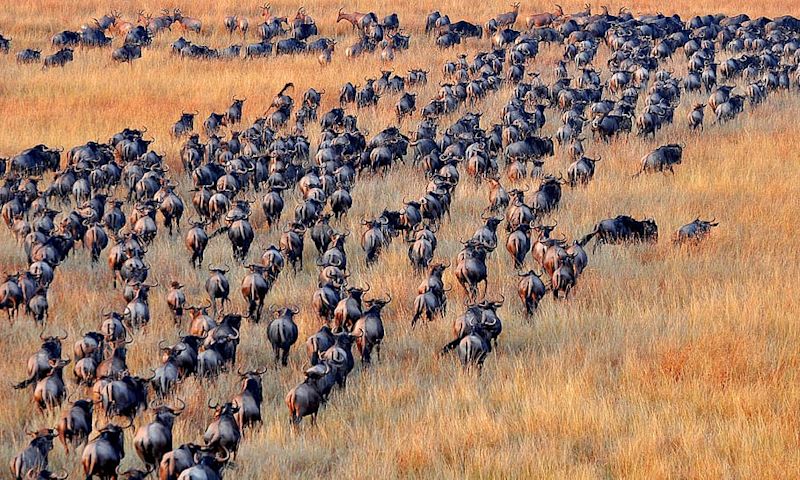Collective nouns came about in the Middle Ages when noblemen wanted to show off their learning and pedigree. Nowadays they still transfer a whiff of learnedness, only most of us don't use them without a smile that acknowledges it's all rather amusing and outdated.
History aside, what are some great wildlife collective nouns you can use to entertain your fellow safari-goers on your next African adventure? Here's our (very personal) pick of the most fun and apt collective nouns to use on safari ...
1. A bloat of hippos
We love a collective noun that's makes sense. A bloat of hippos? Heck yeah.
Want a small tongue-twister? Say bloat of hippopotami out loud.
You also get a thunder of hippos. Equally wonderful.
2. A tower of giraffes
Africa's tallest animal, when standing in a group, is a tower of giraffes. Loving it.
When a group of the animals is on the move, however, they're called a journey of giraffes. Both alliterative and poetic.
3. A skulk of foxes
That's right, Africa has foxes too, like the bat-eared fox and Cape fox. And yes, foxes do indeed skulk, so this one shouldn't be too hard to remember.
You also get a leash of foxes, but that doesn't seem as apt.
4. A shrewdness of apes
Apes are one of the smartest animals, so we think a shrewdness of apes is a great collective name.
Of course, each species of ape has its own collective noun, and some more than one, like a troop, tribe or cartload of monkeys. Whenever in doubt when it comes to a species of ape, just go with troop and you'll probably be on the money.
5. A prickle of porcupines
What's not to love about this one?
Also, did you know that the short, hollow prickles on the tail of a porcupine are used like a rattle to scare off predators? If you love fascinating animal titbits like this, we think you'll enjoy reading 7 truly stupendous facts about the Great Migration.
6. A chorus of frogs
The night-time cacophony that comes courtesy of frogs is familiar to anyone who has spent any real time in Africa. And if you love the sound, then a chorus of frogs seems apt.
Not so keen on the croaks? Maybe then go with one of the many alternatives, like an army, colony, knot, box, bundle or nod of frogs.
7. A crash of rhinos
Crashing is a powerful verb for a very powerful animal.
By the way, did you know that the black rhino, while smaller, is deadlier than the white rhino? You can learn why in The Big Five.
8. A memory of elephants
Yes, yes, you get a herd of elephants too. But isn't a memory of elephants far more beautiful? We all know elephants have excellent memories. The question is: will you remember that memory is an accurate collective noun for elephants?
9. A committee of vultures
Vultures have more than one collective noun, each for a different action or stance. There's a boil of vultures when they're coming down to land. Shudder. A kettle of vultures when flying together. And a venue or committee of vultures for all other times.
Want a mnemonic for remembering the options? Picture a committee having a meeting in a venue where the kettle is boiling over.
10. An aerie of hawks
This one probably needs a bit of explaining, as many won't know the word aerie. An aerie (or eyrie) is a high place for observing what's happening below. It's also a raptor's nest built on a cliff face or high in a tree. So both meanings add to the aptness of this collective noun. And it just sounds really pretty too.
You can also refer to a flock, flight, cauldron, boil (when landing), kettle (when in flight), leash or staff of hawks. According to The Spruce:
The term kettle is believed to have originated from descriptions of hawk flocks looking like soup boiling in a cauldron, pot, or kettle due to the bowl-like shape of thermal currents the birds use for soaring. The birds' pattern of flight is also similar to the steam rising from a teakettle.
11. A flamboyance of flamingoes
Flamingoes certainly are flamboyant in colouring (especially the South American species).
You can also refer to a stand or colony of flamingoes. We like to refer to a stand of flamingoes when they're hanging about in the water, each on one leg, and a flamboyance when they're in flight and at their most showy.
Two of the best places to see Africa's flamingo species are Lake Natron and Lake Manyara, both of which are in northern Tanzania.
12. A cackle of hyenas
Shame, hyenas get a bad rap, probably in large part thanks to The Lion King. They're not actually pure scavengers – they also hunt.
The word cackle perhaps isn't super accurate when it comes to the sounds these creatures make. Hyenas are very vocal and make various sounds. When alarmed or threatened, they make more of a laughing- or giggling-like sound than a cackling sound.
13. A confusion of wildebeests
Wildebeests form enormous herds. But they actually have ingenious ways of locating each other within the crowd, which we discuss in 7 truly stupendous facts about the Great Migration. So the confusion isn't really on their part.
Ironically, you can also talk about an implausibility of wildebeests. Given their huge herds, this might be the least apt of Africa's collective nouns.
14. A float of crocodiles
There are actually four interchangeable collective nouns for crocodiles, we just like float best. But you decide for yourself which you want to use: there's a float, bask, nest or congregation of crocs.
Given that we also talk about a nest of vipers (and often metaphorically to talk about dodgy people), a nest of crocs seems an apt choice if you really don't like the reptiles.
15. A dazzle of zebras
The stripes on zebras can indeed be quite dazzling en masse. They're designed to confuse predators, because a dazzle of zebras creates a mess of stripes.
You also get a cohort or zeal of zebras or, if you wish to be bland, a herd of zebras.
If you're keen to see a dazzle of zebras or a collection of any of the other animals, take a look at our Tanzania safari itineraries or at our Uganda itineraries, which include safari drives as well as gorilla trekking!
